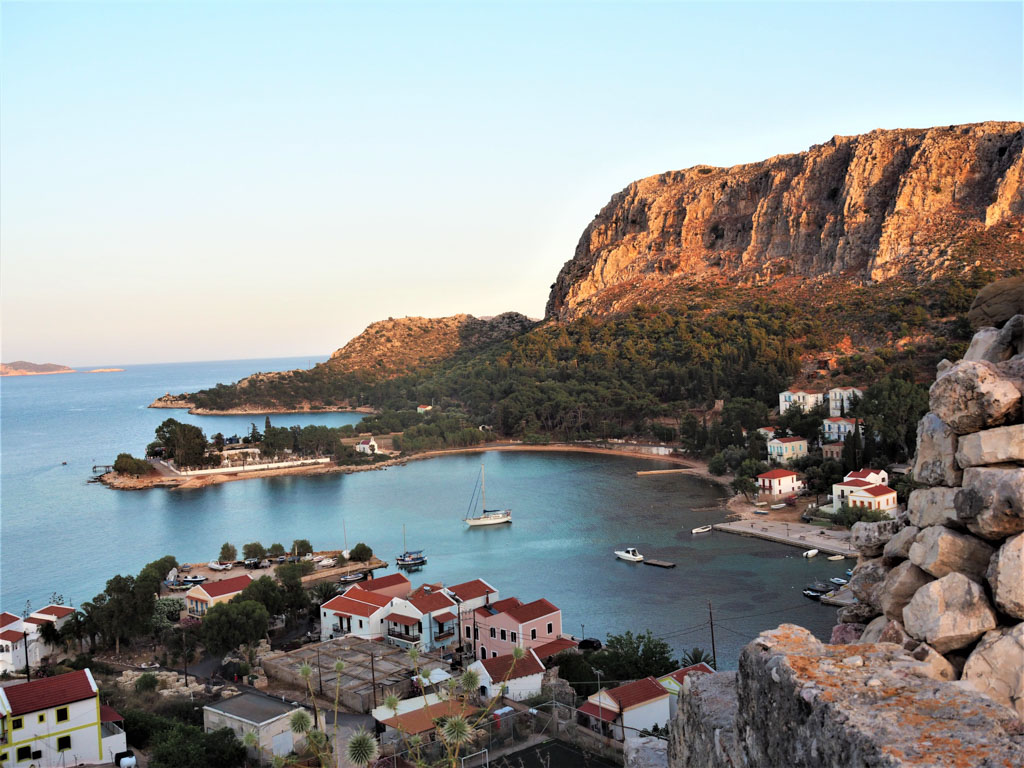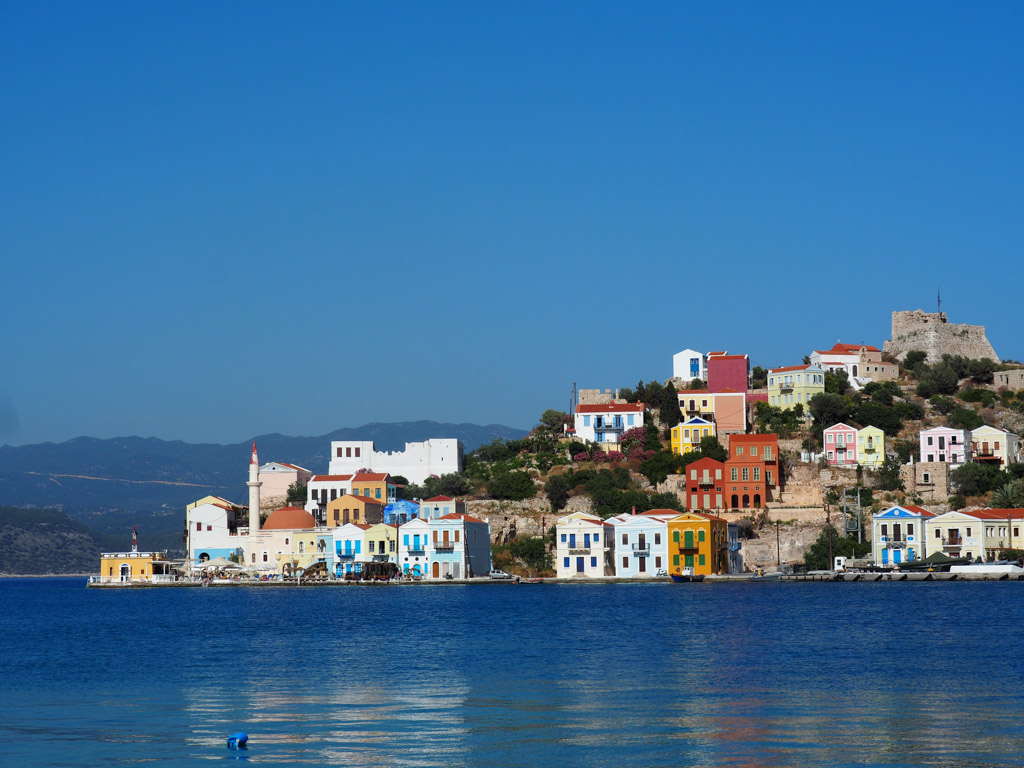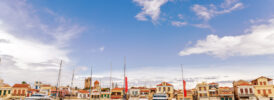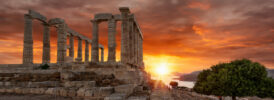Proud, remote Kastellorizo, the smallest of the Dodecanese, is – together with its surrounding islets, the easternmost inhabited frontier of the Greek Aegean, lying less than three kilometers from the shores of Asia Minor. Rich in culture, history, and beauty, it is a marvelous destination.
Ancient Megisti
It wasn’t always called Kastellorizo; in fact, Megisti is its official name. If the name ‘Megisti’ makes you think of ‘large’, then you’re correct- it does mean ‘the largest.’ Kastellorizo may be the smallest of the Dodecanese, but it is the largest of its archipelago, which is why it was given the name Megisti when the Dorians originally colonized. Subsequently, in the Hellenistic era, Kastellorizo was in the domain of Rhodes as part of the Rhodian Peraia.

Kastellorizo followed the historic path of most of its neighbors in the following centuries, ruled by Alexander the Great, then by the Romans before finally joining the Byzantine Empire as part of the ‘Province of the Islands.”
The Knights of St. John on Kastellorizo
At the beginning of the 14th century, following the fall of the Kingdom of Jerusalem to Muslim forces, the Knights of St. John (known otherwise as the Knights ) Hospitaller – a Catholic military order dedicated to protecting pilgrims – sought a new home. Rhodes at the time was still under the control of the Byzantine Empire, and they defended it- the conquest took four years. By 1310, Rhodes was the new headquarters of the Knights of St. John, who then also controlled the surrounding islands, including Kastellorizo.
This is when the Island took its present name. The Knights built a fortress atop some rocks of a red tone – “kastello” + “rosso” is one of several explanations for its present name. The fortress, built in the later 14th century, is a dramatic sight, and below it is a Lycian tomb cut directly into the rocks – unique in all of Greece.
Kastellorizo’s Muslim Community
A look at the map will indicate how bold of spirit the islanders here must be, in such close proximity to the Turkish coast. Like nearly all of Greece, Kastellorizo was once part of the Ottoman Empire, conquered, along with Rhodes, by the forces of Suleiman the Magnificent in the 16th century after a famous siege of 6 months, in which the knights were vastly outnumbered and held out heroically. A mosque of the era can still be seen; it now houses the Ethnographic Museum. A small Muslim community, living peacefully alongside its Christian neighbors, remains on the island still.
The Archipelago of Kastellorizo – Ro – Agios Georgios, Stroggyli
Here off the shores of Asia Minor is an archipelago of charming islands. To the west is the very small islet Ro. Today the Greek Army is there to raise the flag, carrying on a beautiful history. Originally, it was Despina Achladiotou (1890-1982) – the “Lady of Ro” who took on this patriotic honor.

Just across from Mandraki lies the island of Agios Georgios, you can get there by a water taxi that departs from the main harbor. On this tiny island, there is a church dedicated to Saint George and a lovely tavern serving refreshments and snacks.
The other island, Stroggyli, lies 5 kilometers to the east – Stroggyli is the easternmost point in Greece, and its lighthouse is Greece’s easternmost building. Stroggyli, like Ro, is also inhabited by the Greek military.
Pride, Prosperity and Style – The Merchant Community of Kastellorizo and their Mansions
From the mid 19th C through the dawn of WWII, Kastellorizo was a commercial powerhouse, dealing in charcoal and sponges, with an impressive merchant fleet to trade them. With its strategic location in the eastern Aegean, with proximity to Asia Minor and North Africa, as well as deep natural harbors, its destiny was fulfilled with the construction of shipyards.

This era of prosperity saw the building of great mansions, which also served as an announcement of the cultural identity of the Kastellorizans. While the modern Greek State was established after the 1821 War of Independence, it would be over a century before Kastellorizo would finally become Greek – after WWII. In the meantime, the colorful mansions in the neoclassical style boldly and proudly proclaimed the cultural identity of the Kastellorizans.
The Blue Cave of Kastellorizo
Kastellorizo has a truly amazing Blue Cave, vastly surpassing Capri’s famous Grotta Azzurra in its dimensions: 40–50m x 25–30m, and a dramatic 20–25 in height. The blue cave goes also by the name ‘Fokili” – “Fokes” are seals in Greek, and this is called the seals’ refuge.
The cave, which is on Kastellorizo’s southeast coast, can be accessed by boat, for a truly magical experience.
Kastellorizo, Greece’s Eastern Frontier
Have you ever visited the Dodecanese? How about one of the more remote islands of Greece? The smaller and more remote islands such as Kastellorizo can offer visitors a truly unique experience.





